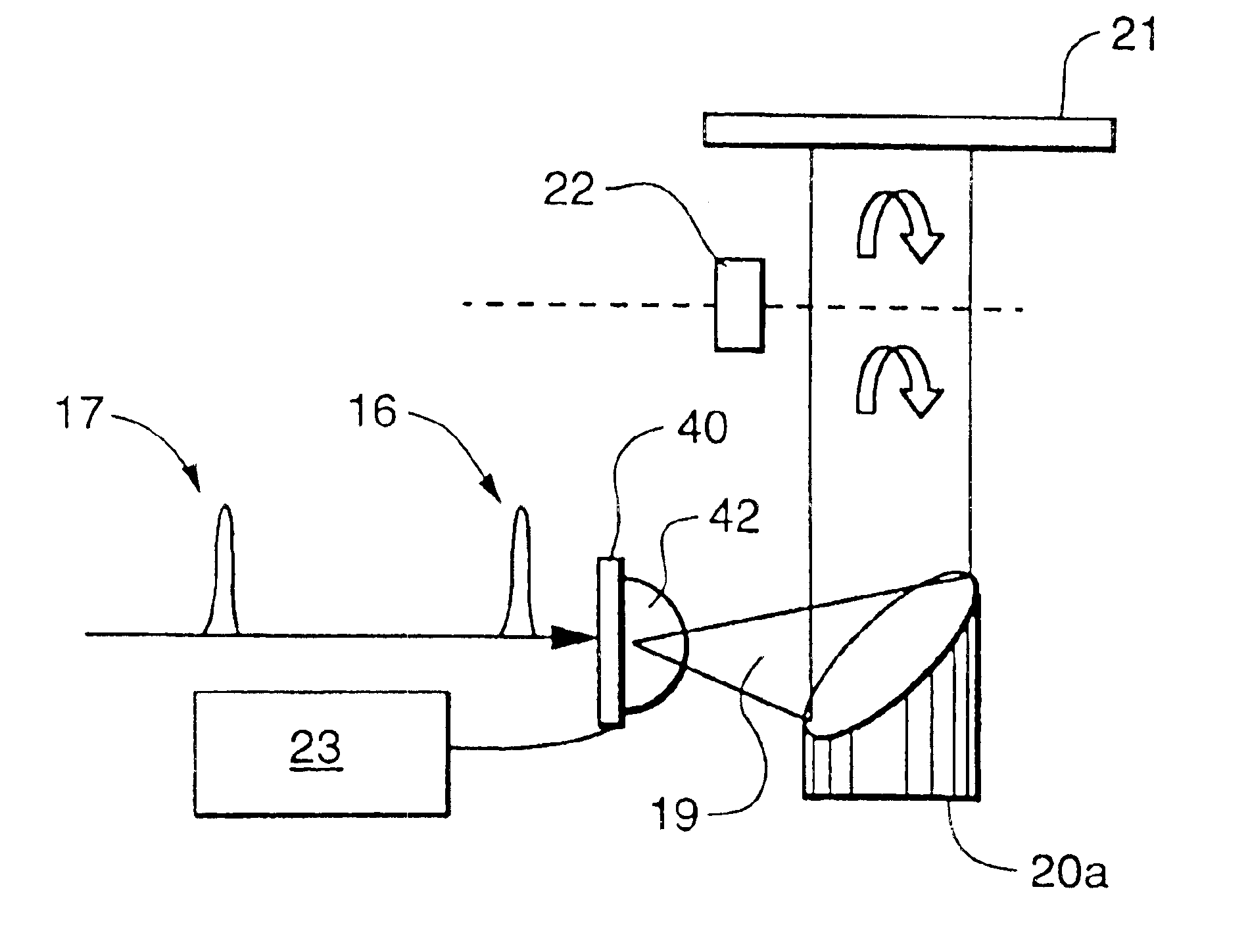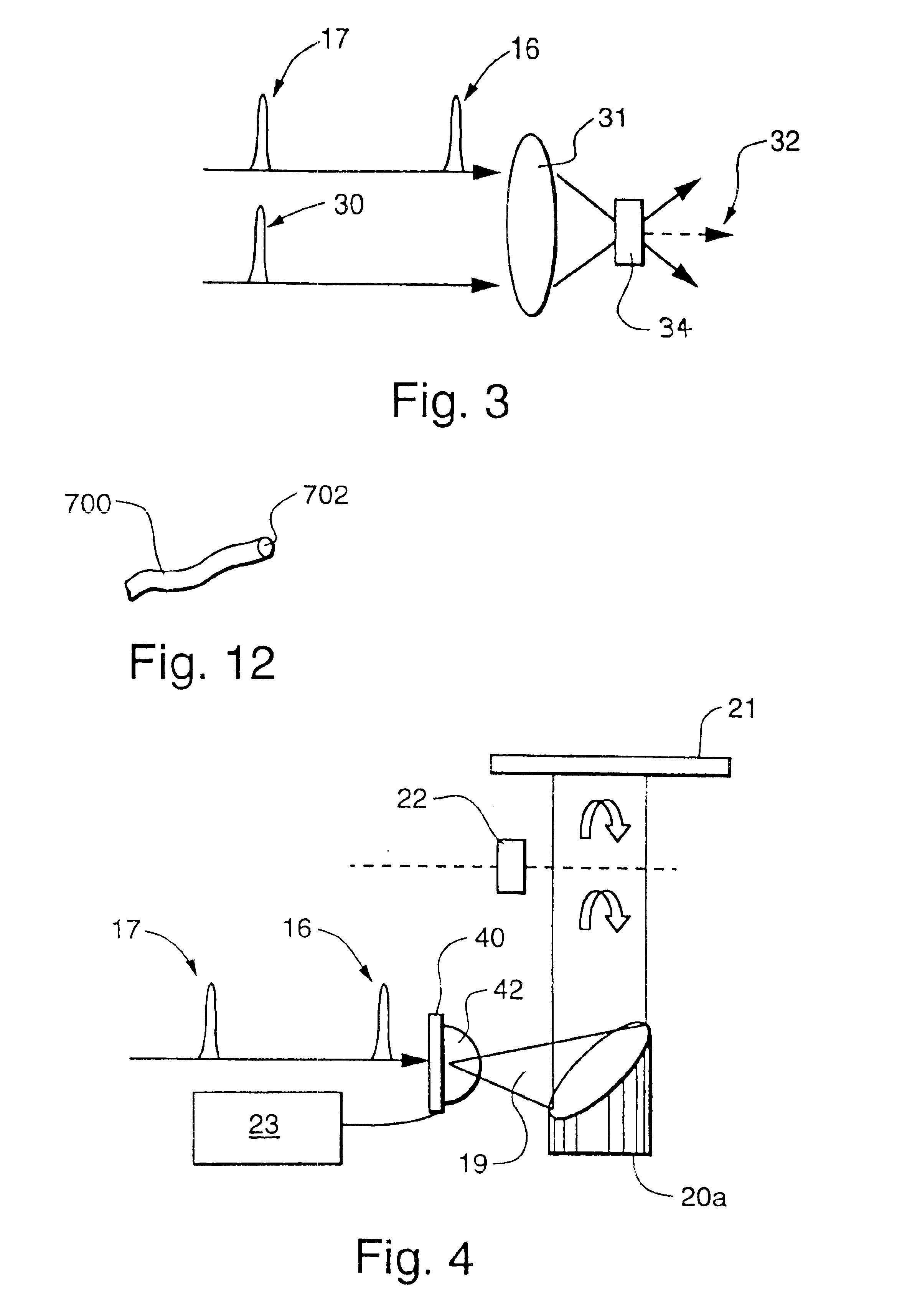Terahertz transceivers and methods for emission and detection of terahertz pulses using such transceivers
a transceiver and terahertz technology, applied in the field of transceivers, can solve the problems of not being able to provide an acceptable signal-to-noise ratio, not known or used before, and achieve the effect of reducing noise in the first signal and reducing nois
- Summary
- Abstract
- Description
- Claims
- Application Information
AI Technical Summary
Benefits of technology
Problems solved by technology
Method used
Image
Examples
Embodiment Construction
b class="d_n">[0025]FIG. 10A is an image of an American quarter dollar generated using an exemplary embodiment of the present invention, where the gray level represents the timing of the peak amplitude;
[0026]FIG. 10B is an image of a British fifty pence piece generated using an exemplary embodiment of the present invention, where the gray level represents the timing of the peak amplitude;
[0027]FIG. 11A is an image of an American quarter dollar generated using an exemplary embodiment of the present invention, where the gray level represents the peak amplitude within a certain timing window;
[0028]FIG. 11B is an image of a British fifty pence piece generated using an exemplary embodiment of the present invention, where the gray level represents the peak amplitude within a certain timing window; and
[0029]FIG. 12 illustrates an exemplary optical fiber THz transceiver.
DETAILED DESCRIPTION OF INVENTION
[0030]Unlike the conventional setup in which the THz transmitter and receiver are spatial...
PUM
 Login to View More
Login to View More Abstract
Description
Claims
Application Information
 Login to View More
Login to View More - R&D
- Intellectual Property
- Life Sciences
- Materials
- Tech Scout
- Unparalleled Data Quality
- Higher Quality Content
- 60% Fewer Hallucinations
Browse by: Latest US Patents, China's latest patents, Technical Efficacy Thesaurus, Application Domain, Technology Topic, Popular Technical Reports.
© 2025 PatSnap. All rights reserved.Legal|Privacy policy|Modern Slavery Act Transparency Statement|Sitemap|About US| Contact US: help@patsnap.com



